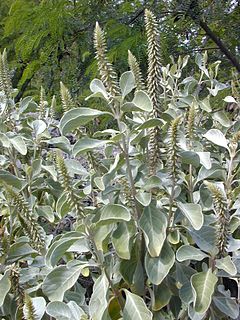
Eduard Suess was an Austrian geologist and an expert on the geography of the Alps. He is responsible for hypothesising two major former geographical features, the supercontinent Gondwana and the Tethys Ocean.

CBBS was a computer program created by Ward Christensen and Randy Suess to allow them and other computer hobbyists to exchange information between each other.

Ward Christensen is the co-founder of the CBBS bulletin board, the first bulletin board system (BBS) ever brought online. Christensen, along with partner Randy Suess., started development during a blizzard in Chicago, Illinois, and officially established CBBS four weeks later, on February 16, 1978.

Johannes Hans Daniel Jensen was a German nuclear physicist. During World War II, he worked on the German nuclear energy project, known as the Uranium Club, where he contributed to the separation of uranium isotopes. After the war, Jensen was a professor at the University of Heidelberg. He was a visiting professor at the University of Wisconsin–Madison, the Institute for Advanced Study, University of California, Berkeley, Indiana University, and the California Institute of Technology.

Achyranthes is a genus of medicinal and ornamental plants in the amaranth family, Amaranthaceae. Chaff flower is a common name for plants in this genus.

Paul Karl Maria Harteck was an Austrian physical chemist. In 1945 under Operation Epsilon in "the big sweep" throughout Germany, Harteck was arrested by the allied British and American Armed Forces for suspicion of aiding the Nazis in their nuclear weapons program and he was incarcerated at Farm Hall, an English house fitted with covert electronic listening devices, for six months.
The Suess effect, also referred to as the 13C Suess effect, is a change in the ratio of the atmospheric concentrations of heavy isotopes of carbon (13C and 14C) by the admixture of large amounts of fossil-fuel derived CO2, which is depleted in 13CO2 and contains no 14CO2. It is named for the Austrian chemist Hans Suess, who noted the influence of this effect on the accuracy of radiocarbon dating. More recently, the Suess effect has been used in studies of climate change. The term originally referred only to dilution of atmospheric 14CO2. The concept was later extended to dilution of 13CO2 and to other reservoirs of carbon such as the oceans and soils.

Ventilago is a genus of plants in the family Rhamnaceae. It includes about 40 species found in the tropics of South and SE Asia, Australasia, with one species each in Africa and Madagascar.
Konrad Beyerle was a German engineer. During World War II, he was in charge of centrifuge research and development at Anschütz & Co. G.m.b.H. He participated in the development of ultracentrifuges for the enrichment of uranium done under the auspices of the German nuclear energy project, also known as the Uranium Club. After the war, he was head of the Institute for Instrumentation of the Max Planck Society.
Cayratia debilis is a species of flowering plant in the Vitaceae family. It is native to equatorial Africa. It has herbaceous or slightly woody vines, with 5-foliate leaves and greenish-white or yellow flowers. Its stem, leaves and sap are used in herbal medicine in various African countries, and the leaves are eaten as a vegetable on the island of Bioko. Its fruits are inedible, although are fed to poultry in the Central African Republic to protect from influenza and coccidiosis.
Helicia fuscotomentosa is a plant in the family Proteaceae. It grows as a tree up to 25 metres (80 ft) tall, with a trunk diameter of up to 30 centimetres (12 in). The bark is mottled grey and black. The flowers are reddish brown. Its habitat is forests from sea level to 2,000 metres (6,600 ft) altitude. H. fuscotomentosa is endemic to Borneo.
Hans Eduard Suess was an Austrian born American physical chemist and nuclear physicist. He was a grandson of the Austrian geologist Eduard Suess.
Karl Suessenguth was a German botanist.
Centemoposis is a genus of plants in the amaranth family, Amaranthaceae and is found in Africa distributed from Tropical Africa to South Africa.
Kentrothamnus is a monotypic genus of flowering plants in the family Rhamnaceae, native to Bolivia and Argentina. The only species is Kentrothamnus weddellianus. It is an actinorhizal plant.
Wettsteiniola is a genus of flowering plants belonging to the family Podostemaceae.
Allmaniopsis is a genus of flowering plants belonging to the family Amaranthaceae.
Crumenaria is a genus of flowering plants belonging to the family Rhamnaceae.
Pedersenia is a genus of flowering plants belonging to the family Amaranthaceae.
Tulbaghia leucantha, the mountain wild garlic, is a species of flowering plant in the family Amaryllidaceae, widely distributed in southern Africa. It has gained the Royal Horticultural Society's Award of Garden Merit as an ornamental.






